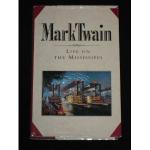’The towboat “Jos. B. Williams” is on her way to New Orleans with a tow of thirty-two barges, containing six hundred thousand bushels (seventy-six pounds to the bushel) of coal exclusive of her own fuel, being the largest tow ever taken to New Orleans or anywhere else in the world. Her freight bill, at 3 cents a bushel, amounts to $18,000. It would take eighteen hundred cars, of three hundred and thirty-three bushels to the car, to transport this amount of coal. At $10 per ton, or $100 per car, which would be a fair price for the distance by rail, the freight bill would amount to $180,000, or $162,000 more by rail than by river. The tow will be taken from Pittsburg to New Orleans in fourteen or fifteen days. It would take one hundred trains of eighteen cars to the train to transport this one tow of six hundred thousand bushels of coal, and even if it made the usual speed of fast freight lines, it would take one whole summer to put it through by rail.’
When a river in good condition can enable one to save $162,000 and a whole summer’s time, on a single cargo, the wisdom of taking measures to keep the river in good condition is made plain to even the uncommercial mind.
Chapter 29 A Few Specimen Bricks
We passed through the Plum Point region, turned Craighead’s Point, and glided unchallenged by what was once the formidable Fort Pillow, memorable because of the massacre perpetrated there during the war. Massacres are sprinkled with some frequency through the histories of several Christian nations, but this is almost the only one that can be found in American history; perhaps it is the only one which rises to a size correspondent to that huge and somber title. We have the ’Boston Massacre,’ where two or three people were killed; but we must bunch Anglo-Saxon history together to find the fellow to the Fort Pillow tragedy; and doubtless even then we must travel back to the days and the performances of Coeur de Lion, that fine ‘hero,’ before we accomplish it.
More of the river’s freaks. In times past, the channel used to strike above Island 37, by Brandywine Bar, and down towards Island 39. Afterward, changed its course and went from Brandywine down through Vogelman’s chute in the Devil’s Elbow, to Island 39—part of this course reversing the old order; the river running up four or five miles, instead of down, and cutting off, throughout, some fifteen miles of distance. This in 1876. All that region is now called Centennial Island.
There is a tradition that Island 37 was one of the principal abiding places of the once celebrated ‘Murel’s Gang.’ This was a colossal combination of robbers, horse-thieves, negro-stealers, and counterfeiters, engaged in business along the river some fifty or sixty years ago. While our journey across the country towards St. Louis was in progress we had had no end of Jesse James and his stirring history; for he had




